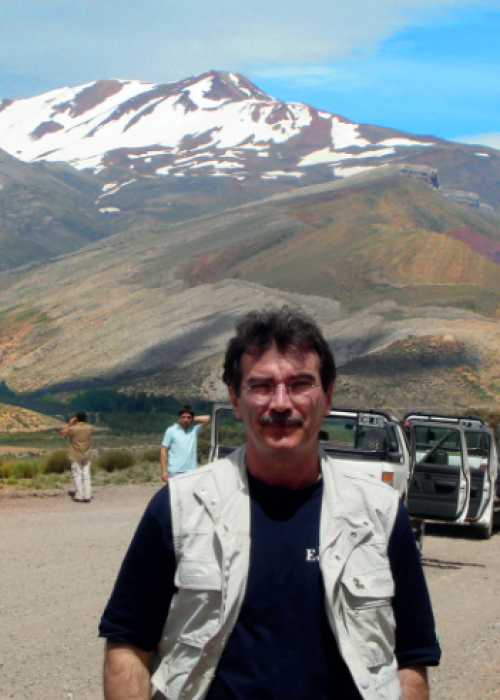INTRODUCING
PLANET MODEL OF PLATE TECTONICS
Based on Einstein’s Theory of Relativity

Towards geology Students
This book contains a concise and objective account of plate tectonics model herein presented and so called Planet Model.

Towards people interested in Relativity
It starts with a historical evolution of the physical conceps of space, time and inertia, which ends up being incorporated by the theories of relativity.

Updated data
It's features includes, among its topics, the new concept of wedge plates, as well as an explanation for the varying dip of the subducting slabs and back-arc of basins.
Learn more about the New Model
The new plate tectonics model presented in this book is an attempt to approach a current
controversy in the existing models. It intends to overcome their inconsistencies by proposing a
new one as consistent as possible
The Controversy
There are some of the most recent theories of the models of Plate Tectonics, discussed in the book, wich in their context, they contain a problematic geological issue.
A New Model
They have raised many difficulties in sustaining some of their studies over the years, and now they are subjected to being approached in a attempt to uncover a controversial issue by the new Plate Tectonics Model presented on this book.
A Consistent Theory
The purpose of the the Planet Model is to present a precise and an innovative way to understand how the Earth's structure has a profound connection with gravity in its surroundings, during the formation of the tectonic plates.
The Model Concepts
Conceptually it builds the study on the theory of Relativity, and presents the Earth as an alive and changeable cosmic body.

THE BOOK CHAPTERS - OVERVIEW
The author provides a fundamental understanding of the Earth's structural shape
Composed of seven chapters, full of data-rich content, the book describes in a didactic and direct way, the latest model of tectonic plates, called the Planet Model. Here is a preview of some of the chapters:
- Chapter 1- Presents the evolution of the ideas of Plate Tectonics
- Chapter 2- Reports the Concepts of Inertia
- Chapter 3- Describes the evolution of Space and Time
- Chapter 4- Presents the Special Theory of Relativity
- Chapter 5- Describes the Theory of General Relativity
About the Author
Nivaldo Destro
Nivaldo Destro was born in the town of Presidente Prudente, São Paulo State, Brasil, and he is a Brazilian- Italian citizen. He is a Geologist at Petrobras – Petróleo Brasileiro S.A where he has worked as an exploration geologist since 1986. His work is focused on structural geology and geotectonics, the topics of his Master and PhD degrees at the Federal University of Ouro Preto, Minas Gerais State, Brasil. He has introduced the concepts of new types of transverse estructures in extensional systems, the so called release faults and joints.

About the Author
Nivaldo Destro

Nivaldo Destro was born in the town of Presidente Prudente, São Paulo State, Brasil. He is a Geologist at Petrobras – Petróleo Brasileiro S.A where he has worked as an exploration geologist since 1986. His work is focused on structural geology and geotectonics, the topics of his Master and PhD degrees at the Federal University of Ouro Preto, Minas Gerais State, Brasil. He has introduced the concepts of new types of transverse estructures in extensional systems, the so called release faults and joints.
Testimonials
Word from our Readers
A little bit of our satisfied readers words about their experience in reading Planet Model of Plate Tectonics..
"A fascinating new theory on the Earth's origins written in a sparkling style with many personal touches."
"Destro takes us on one of the grandest tours of them all - a peack of history of geology of our planet. From the influence of gravitational agents onto the layers of the structues of the Earth. Read Planet Model of Plate Tectonics and you will not see Earth in the same way again."

What you are going to see
The illustrations on the book intend mostly to emphasize the genetic comprehension of the physical concepts involved. Here is a breef description about them:
Inertia and Spacetime
Images that are meant to illustrate the historical evolution of the fundamental physical concepts.
Tectonic Features
Mid-ocean ridges, sudduction zones, mountain ranges, and linear volcanic chains are portraited along with the descriptions about them.
Earth's most abundant elements
An organized display of the elements that are most comon on the upper crust, mantle and core models.
To Access the Book
Products
Sed senectus commodo lacus at metus morbi litora ligula aptent non interdum. Sit consectetuer dictumst volutpat ad semper inceptos suscipit dui cubilia nullam conubia.
Ridiculus eros cursus nullam donec congue sed cubilia. Semper curae consectetur blandit at vel fusce fames. Posuere proin ligula senectus phasellus cursus.
